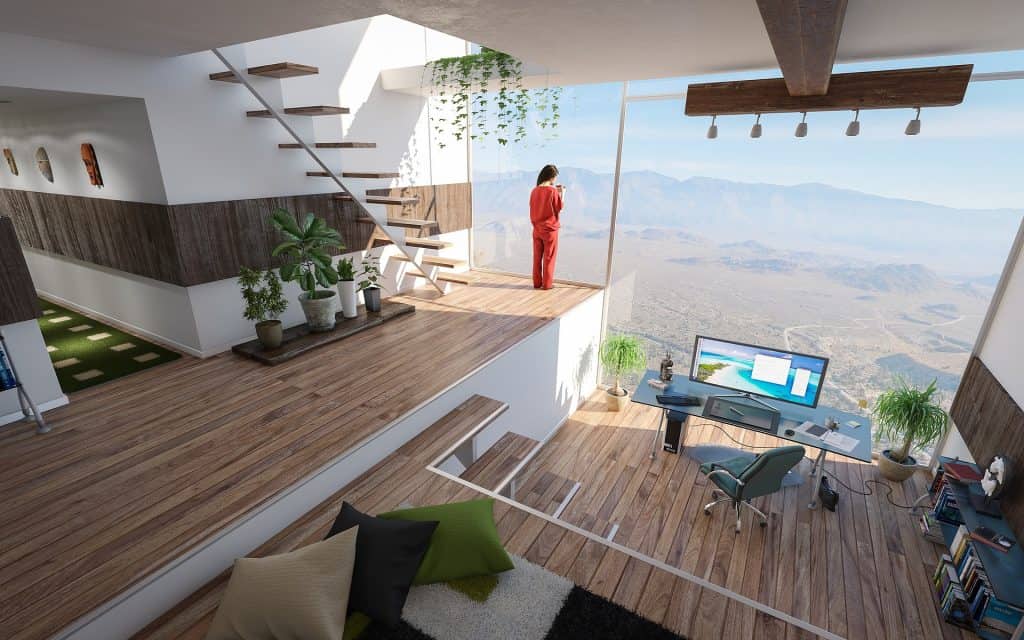Getting to the point where you aren’t just looking for your next office space but deciding to build something architecturally specific to your business is an incredible opportunity. Though many businesses don’t get here (or simply don’t need to), this is a standout moment in the growth of a large company and the perfect opportunity to get exactly what you want.
Building a space that suits every aspect of your business, fits in with the local landscape and still comes in on budget is quite a challenge. Unlike building your own home where you can busk to an extent, you will certainly need professional architects, quantity surveyor project manager to oversee the whole project from start to finish. This is not the kind of project where you can save money by painting yourself or using old furnishing so you will need to keep tight control on your budget too.
But rather than getting into the nitty-gritty now, let’s instead think about some of the larger questions you need to answer before you can even start planning.
Where Will You Build?
Just as you would search for the best location for a rented premises, the building process begins when you find a suitable location. Though you may not have a strong idea of what you want or how you will fill the space, where a plot is located, the size of the plot and even the shape of the plot and how flat or hilly it is will have an impact on your final design.
When choosing your location you must think about 2 main things: will your employees be able to get here easily and will your clients be able to find you? If your employees can’t get to work, they aren’t going to be much use to you so, if you are going for a more remote location, you should think about putting on buses to get employees from their homes (or a local hub) and into work. Clients will probably be able to put some effort into getting to you, even if you are quite far away but if you are meeting regularly, it is worth thinking about how they will get to you (and you to them).
Much of the time, large campuses are built on green land (as opposed to brownfield which has already been built on before. This is simply because it is easier to fit a large building in a large space and brownfield sites are usually limited in space. This throws up a few problems including how you are going to get basic utilities like water and electricity as well as building infrastructure around the campus.
Furthermore, you will need to think about how you will fit into the local municipality. Though you might think that as a private company you can live and work in a bubble, you can’t help but have an impact on your local area. This is why it is so important that you do employ all the professionals as suggested above – especially if you can find a civil engineer with experience with municipal engineering. To get an idea of the type of company you should consider, have a look at Cochran Engineering for more. Liaising with local authorities is paramount to ensuring that you fly through all the required rules and regs. Plus, working in harmony with any municipal development allows you to make the most of any pre-existing or newly-constructed infrastructure. If you’re working to take on governmental contracts as a private company this is a particularly enticing route to take for closer ties and public perceptions.
Deciding What You Need
Figuring out what you actually need is the first challenge. Unlike other office spaces where you can move on later if you need extra space or different layouts, building your own is a much more permanent decision. Companies like Google and Facebook have managed to get around this by building campuses but the reality is that unless you are rapidly approaching international conglomerate status, you won’t need this level of project.
So, what do you need?
Different businesses, naturally, have different needs but often the spaces they have don’t quite fit perfectly. This is your chance to rectify that. If you are a manufacturing company, this might mean that you can create a bespoke factory that matches the dream production line; a tech company might want something a little different which incorporates large open plan office areas, theatres and meeting spaces.
But you should also think about the other things your employees will require. If you are planning to build in a more remote location and bus people in, you will need things like shops, cafes and other areas where people can relax on breaks. While you might not want to create the kind of atmosphere where people don’t feel that they are allowed to go home (because they should be ‘playing’ at work) you do need to cater for everyone’s needs.
The space you have will affect every aspect of how you work and the quality of your day. You should look at building your own workplaces as an opportunity to promote a particular culture within your workforce. For example, a simple thing like putting in standing desks might encourage people to have shorter and more productive meetings rather than long periods sat at desks.
This is a chance to experiment.
Making an Impact
No matter what you do, building your own workplace will have an impact on you, your business, the employees and the area you have chosen. There is no getting away from this so rather than trying to minimize your impact (whatever that means) you should manage the impact you plan to make.
So, what sort of options are available here?
Well, you might start by thinking about how your building will interact with the buildings surrounding it. This is important because buildings say a lot about the designers and inhabitants and your office will certainly reflect upon you – whether you want it to or not.
Facebook’s planned extension to the Menlo Park Campus is a great example of how architecture can talk to an area and surroundings. Large windows give a great view out from the offices but they also offer an interesting view in. Smaller details like the angle of the walls and the use of similar materials also help to settle a building into a particular area. A great architect will be able to give you an incredible building that will sit so well in its location that it appears almost natural it would be there.
You should also consider how your office will impact on the environment. Every business should now be thinking carefully about how business activity will affect the environment and what can be done to mitigate any potential for damage.
If you have a large roof space, it is very likely that investing in solar panels would be a good way to ease your environmental conscience, not to mention save considerably on your electricity bills. Though no business would be likely to want to go completely off-grid, having your own source of power is a great asset plus, if there was ever a problem with municipal electricity, you would still have a backup source.
Considering the outdoor space you have is also an important step. While rolling fields might be fairly easy to maintain with a herd of goats you have a huge opportunity here. Planting trees is vital for the health of the planet and at the rate we are chopping down trees, a significant effort to reforest land needs to be made. But why stop there when you could grow fruits and vegetables, flowers and all kinds of other plants?
Having an outdoor space to relax in is really important for everyone. We all show signs of calming down when we are around nature and though we may not be able to get out into the wild, a well-maintained garden does a similar job. In fact, why not offer gardening time to some of your employees as a wellness activity.
Are You Ready to Get Started?
Hopefully, this blog will help you to think about all the possibilities that open up when you build your own workplace. Though the details are still to be hashed out and there is plenty more to do, you should now have a seed of an idea forming that an architect will be able to translate into something quite literally more concrete.
If you are still feeling unsure about what exactly will benefit everyone, it is a good idea to ask. Gather a group of people who are representative of most of the company (from different departments and levels of seniority) to find out what would make their working lives easier and how that might translate into the finished building. You will be surprised by the number of different responses you get from the wacky answers that lead to installing slides between floors to the sensible solutions that make everything work better.
So there you have it. Now is your moment to let your imagination run wild. It is a rare opportunity to be able to afford to build for a business and though there is a lot of pressure to make it work, there is also a lot of possibility. Make your stamp, place your mark on the planet and please, make it a good one.
 * This post was written by an outside source – See Disclosure Policy
* This post was written by an outside source – See Disclosure Policy




